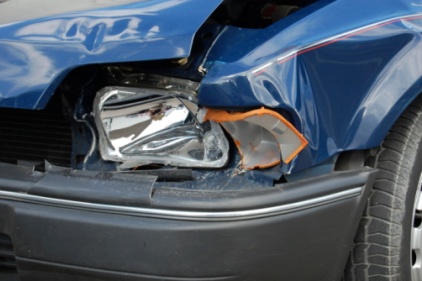Texting in traffic: Adults worse than teens
-and they admit that it's wrong

 Source: USA Today
Source: USA Today
Forget teenagers. Adults are the biggest texting-while-driving problem in the USA. What's worse — they know it's wrong.
Almost half of all adults admit to texting while driving in a survey by AT&T provided to USA TODAY, compared with 43% of teenagers. More than 98% of adults — almost all of them — admit they know it's wrong. Six in 10 say they weren't doing it three years ago.
"I was a little bit surprised," Charlene Lake, AT&T's senior vice president-public affairs, says of the survey of 1,011 adult drivers. "It was sobering to realize that texting while driving by adults is not only high, it's really gone up in the last three years."
This follows an extensive national campaign against distracted driving: 39 states and the District of Columbia ban texting while driving for all drivers, and an additional five states prohibit the practice for new drivers, according to the Governors Highway Safety Association.
"Texting while driving is not just a teen problem," says John Ulczycki of the National Safety Council. "Teens text. But you're looking at around 10 million teen drivers, but about 180 million other adult drivers."
The AT&T survey follows a study this month from the Centers for Disease Control and Prevention that found 31% of drivers in the USA reported texting or e-mailing while driving.
Each day, an average of more than nine people are killed and more than 1,060 injured in crashes caused by distracted driving, according to the CDC. In 2011, 3,331 people died in crashes involving a distracted driver, up from 3,267 in 2010, according to the Department of Transportation.
The government doesn't specifically track texting-related crashes. But texting while driving is considered the most dangerous form of distraction because it involves the eyes, the hands and the mind.
Researchers at Virginia Tech Transportation Institute found that sending or receiving a text takes a driver's eyes off the road for an average of 4.6 seconds — about as long as it takes to drive the length of a football field at 55 mph. The researchers found that texting creates a crash risk 23 times worse than driving while not distracted.
AT&T conducted the survey as part of its It Can Wait campaign, which began three years ago and urges drivers to delay texting until they're not behind the wheel. More than 1.3 million people have pledged to do so, Lake says.
The telecommunication giant urges businesses to join the effort and help move their employees beyond awareness toward a personal commitment. More than 165 organizations have signed up, Lake says.
One of them, insurer USAA, began working with AT&T in November, says Joel Camarano, executive director of property and casualty underwriting at the nation's sixth largest auto insurer.
"USAA was so impressed with the It Can Wait campaign that we sponsored our own campaign to not text while driving for our employees," he says. About 6,500 of the company's 24,700 employees took the pledge in about a week, he says. "We are currently in discussions to figure out the most effective way we can … expand the reach of this important campaign
Looking for a reprint of this article?
From high-res PDFs to custom plaques, order your copy today!






.jpg?t=1721257160)
